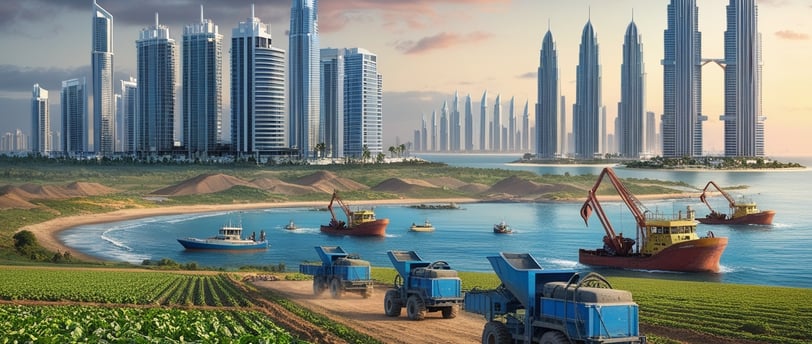The Reality of Economies in Latin America: A Look at the Primary Sector and the Lack of Long-Term Vision
Javier Fernández
9/30/20242 min read


The Reality of Economies in Latin America: A Look at the Primary Sector and the Lack of Long-Term Vision
The economies of Latin America and South America are still heavily reliant on the primary sector, which includes agriculture, mining, fishing, and forestry. Although this sector has been crucial for economic growth, its dependence in a globalized world, where innovation and diversification are key, poses significant challenges.
The Primary Sector: An Economic Foundation with Limited Future
The abundance of natural resources has been both a blessing and a curse for South American countries. Nations like Peru, Chile, Argentina, and Venezuela have built their economies around the export of raw materials such as minerals, oil, and agricultural products. However, the lack of economic diversification, combined with the volatility of international commodity prices, has repeatedly exposed these countries to crises.
Trends
From a technical perspective, the behavior of the primary sector in Latin America is as follows:
International Commodity Prices
Prices of commodities such as copper, oil, and soybeans have direct impacts on the economies of the region. Over-reliance on these products subjects countries to unpredictable fluctuations in global markets. A technical analysis of price cycles reveals instability patterns that the region's economies are unprepared for due to the absence of long-term strategies.
Lack of Long-Term Planning
Unlike countries like Dubai, where plans like the Dubai Vision 2030 have been implemented to diversify the economy into sectors like tourism, technology, and renewable energy, South America lacks serious efforts to develop alternative sectors. This absence of vision limits the region’s growth potential and keeps it dependent on raw materials.
Insufficient Investment in Infrastructure and Technology
The primary sector needs adequate infrastructure to maintain production and exports. However, investments in technology and innovation are still insufficient. While economies like Dubai have adopted advanced technologies and created innovative ecosystems, the adoption of technology in agriculture and mining in South America is progressing slowly. This technological lag affects productivity and global competitiveness.
The Comparison with Dubai: Unlearned Lessons
Dubai offers a clear example of how a country that was once dependent on a natural resource (oil) successfully diversified its economy to reduce this reliance. Through a long-term vision and well-defined strategic plans, Dubai has invested in modern infrastructure, education, and the creation of new economic sectors such as luxury tourism, financial services, and clean energy.
Challenges and Opportunities: A Sustainable Future
The lack of long-term vision is one of the greatest challenges facing South American economies. Over-dependence on the primary sector is a warning sign. As natural resources deplete or become less profitable due to price fluctuations and climate change, countries that haven’t diversified their economies face an uncertain future.
However, opportunities also exist. The growing global demand for food, minerals for technologies, and renewable energy presents an opportunity window. To take advantage of this, governments must adopt a more holistic approach that includes sustainable development policies, industry diversification, and the creation of an innovation-friendly environment.
Conclusion
The economic reality of Latin America clearly shows a dependence on the primary sector but also reveals a concerning lack of long-term vision.
The region’s future will depend on whether it can pursue a more ambitious and strategic vision. It’s crucial to learn from successful models like Dubai, invest in new technologies, and diversify revenue streams. Only by doing so can sustainable growth be ensured, reducing the vulnerability of the economies and offering a more promising future.
